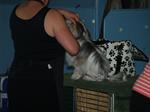A course for anyone Working with Animals

- Domestic or wild animals
- Learn about their health, psychology and well being
- Explore the industry and opportunities for business or employment
Course Content
There are 6 modules in this course:
Three core modules
1. Pet Care Introduction to Animal Care, Cats, Dogs, Birds, Fish, Rabbits, Reptiles and Amphibians, Rodents, Guinea Pigs, Hamsters, Mice
2. Animal Health Care Introduction to Animal Health Care, Common Health Problems in farm animals and pets, Animal Behaviour, Signs of Ill Health, Veterinary Facilities, Safety Procedures, Administration of Animal Health, Animal First Aid, Preventative Health Care, Routine Health Treatments, Health Problems in Domestic Pets, Rehabilitation Care
3, Animal Behaviour Introduction, Influences and motivation, Genetics and Behaviour, Animal Perception and Behaviour, Behaviour and the Environment, Social Behaviour, Instinct and Learning, Handling Animals, Behavioural Problems
4. Choose three additional subjects (modules) as electives from the following list of twelve possible modules
- Bird Keeping
- Aquarium Management
- Dog Care
- Cat Care
- Dog Psychology and Training
- Cat Psychology and Training
- Natural health care for animals
- Animal breeding
- Starting a small business
- Diagnosing Animal Disease
- Herpetology
- Advertising and Promotions
- Internet Marketing
- Business Studies
Here's a small selection of some items you will study in the core studies:
- Develop timetables for husbandry tasks to be undertaken over a typical week when caring for a specific breeds of animals.
- Develop a check list of things which should be done regularly to ensure the good health for pets.
- Compare the requirements and restrictions for keeping different types of animals as pets in your locality.
- Identify ideal diet for a small range of animals.
- Determine common signs of a general disease condition in animal.
- Identify factors affecting animal behaviour.
- Explain how animals perceive and how they respond to various stimuli.
- Explain the social influences on animal aggression, play, sexual behaviour, communication and other behaviours.
- Describe different ways that animals learn (such as conditioning and habituation) and some effects of learning on behaviour.
- Discuss psychological implications of different handling techniques.
- Identify abnormal animal behaviour (eg. psychotic, neurotic behaviour) and ways to reduce dependence on humans.
- Describe common health problems in various animals, including injuries and diseases.
- Explain the natural behaviour of different types of domestic animals in different situations.
- Identify common signs of ill health in different animals.
- Describe the purposes of different facilities used in veterinary practice.
- Describe/select first aid procedures/treatments for different animals in response to common health problems in animals.
- Describe requirements for maintaining good health in domestic animals, including nutrition & preventative medicine.
- Develop an understanding of routine treatments for healthy animals.
- Develop a broader awareness of health problems and their treatment in domestic pets.
- Develop skills in caring for animals prior to, during or after treatment.
So once you decide on your electives, remember you can speak with a tutor to help you decide which ones are best for your training needs, then you can get started today. Access your study materials the same day as you enrol - it couldn't be easier!
Tactile Therapy Can Help Pets

Tactile therapy is focused on treating ailments in animals with touch or physical therapy. There are many forms of physical therapy available for animals. Some of these are listed below. It is important to keep in mind that although animals do not generally openly display signs of pain, it can be present and should always be checked for and monitored.
Massage
Massage involves manipulating muscles and connective tissues. It may be practiced by itself or in conjunction with other therapies. There are many different types of massage. The intensity (pressure) applied varying greatly. The way an animal is massaged needs to be tailored to suit the condition of its tissues and other factors.
There can be dangers in some types of massage:
- Deep tissue massage can cause bruising or injuries to animals with softer tissues
- Massage can cause some types of cancer to spread in the body.
Equine Tactile Therapy
Horse massage is very popular and has been used as a treatment for many years. Equine tactile therapy is carried out on different horses including working horses, dressage horses, racing horses and horses used for pleasure. Massage can have many benefits and uses such as therapeutic, relaxation and sports massage.
Bowen Therapy
Bowen Therapy is a holistic approach to pain relief and healing in both humans and animals. It was originally developed by Tom Bowen of Australia, with the underlying factor being that the cause or source of many musculoskeletal, neurological, neuromuscular and other health problems could be located in the soft tissue. It is commonly used to a treatment for horses but is also used to treat small animals.
Canine Myofunctional Therapy
Canine Myofunctional Therapy (CMT) or Dog Massage is used to help dogs recover from illness and improve health following operations and to maintain health and wellbeing. It is a gentle, therapeutic massage of the entire body and varies with the needs and desired outcomes for the individual dog. CMT aims at improved muscle and (other) tissue function and balance for dogs.
Physiotherapy
Physiotherapy or “Physical Therapy” aims to develop, maintain and restore optimum movement and function in patients. This involves treating diseases or injuries by physical treatments such as massage, stretching, heat or prescribed exercises. The aim of physiotherapy in animals such as dogs and horses is to reduce the impact of injury and disease, optimise healing and quickly return animals to their previous performance and function.
Shiatsu
Shiatsu originated in Japan, “shi” meaning finger and “atsu” meaning pressure. This system of therapy involves manipulation or massage, specifically applying pressure to certain points of the body. The aim of shiatsu is to gently stimulate the body’s natural healing ability. Shiatsu works especially well for dogs, horses and cats.
Reflexology
Reflexology focuses on stimulating nerves on the feet and ears to in turn stimulate healing. This is generally considered as a treatment to be used in conjunction with other treatments rather than by itself. It has been used to maintain health, improve behaviour, relax animals and reduce or eliminate stress.
Osteopathy
Osteopathy was founded in the late 1800s under the guiding principle “structure governs function”. Osteopaths place emphasis on the musculoskeletal system and believe that the condition of muscles and bones has a major effect upon the overall health of an animal. Osteopathy aims to correct problems with muscles and bones; and in doing so, improve the capacity of the body to cure other problems. Throughout the 20th century, osteopathy has adopted the discoveries of modern science and adapted its practices accordingly resulting in it being considered more mainstream than chiropractic. Animal osteopaths massage, manipulate and mobilise the muscles and joints of animals to regain correct structure to help the body function correctly and assist healing.
Chiropractic
Chiropractic is based upon the idea that the nervous system coordinates all the body’s functions and that manipulation of the body principally the spine) can affect parts of the body beyond the areas that are being manipulated. Some chiropractors believe primarily in the use of chiropractic treatments alone, but other chiropractors believe in a more holistic approach, using chiropractic in conjunction with other therapies/treatments. Animal chiropractors use a variety of methods to manipulate the musculoskeletal system including stretching, soft tissue massage, trigger point therapy, myofascial release and general massage. Chiropractic treatment is commonly used on professional dogs to treat disorders and musculoskeletal problems which limit performance.
Acupuncture
Acupuncture started in China around 2000 years ago, but has grown in popularity in western countries over the last 50 years. Acupuncture involves stimulating anatomical sites on the body, traditionally by inserting very fine metal needles into the skin. Some practitioners also practice acupuncture using electrical stimulation. Acupuncture allows the body to release endorphins which alter the way in which the brain and nervous system recognise an area of disease. Many vets use acupuncture on various animals including rats, dogs, cats, birds, horses, elephants, pigs, and rabbits.
Micro-Current Frequency
Specific Microcurrent (FSM©) involves delivery of a very specific electrical impulse to the skin. Research has indicated that this treatment can improve oxygenation and regeneration of tissue at a cellular level. It is used to reduce inflammation, treat pain, increase metabolic activity, accelerate healing and increase activity of the immune system. Microwave Therapies Applying specific wavelengths of microwaves can have different effects. Microwaves have been used to kill cancers. They have also been used in a similar way to micro current, to improve healing, reduce pain, inflammation, etc. The use of microwave therapies is controversial and needs to be well-researched before being adopted as a treatment method.
Ayurvedic Medicine Originating in India over 5000 years ago, this traditional form of medicine incorporates a wide variety of different therapies including massage, relaxation, nutrition (diet), herbal medicines, minerals, and detoxification. Emphasis is placed on prevention and maintenance of health through the understanding of the three principal energies of the body (metabolism, movement and lubrication and structure). Ayurvedic medicine has been adapted for animals, especially those which are continually active such as horses used in competition and show dogs.
Traditional Chinese Medicine This is based on the concept that there is a flow of energy (i.e. Chi) through the body. It is considered that there are two types of energy which must be balanced (Yin is negative energy; and Yang is positive energy). Disease is said to result when the flow of energy is blocked or the balance between yin and yang is not maintained. A wide range of different treatments are used to restore imbalances or blockages in energy. These include: herbal medicine, acupuncture, massage, prescribed exercises, meditation, and prescribed nutritional treatments.
 Eating Disorders More Common in Domesticated Animals
Eating Disorders More Common in Domesticated Animals
Animals in the wild seem to be free from eating disorders. Their body will respond to seasonal and reproductive cycles. However, domestic animals and animals in captivity can be prone to eating disorders.
Activity Anorexia is a condition similar to human Anorexia nervosa, where an animal will begin to cut down on their food intake and increase their exercise levels. If rats are given access to an exercise wheel and food, they will have a balanced routine between food and exercise and be healthy. If their food is restricted, but they have unrestricted access to the exercise wheel, they may begin to eat less and exercise more, which can lead to weight loss and eventually death. This does not occur when the rats are given restricted access to the wheel and unrestricted food supplies. This type of research suggests that the running behaviour is similar to the natural behaviour of rats – foraging, so when the rat is starting to starve their response is to look around for more food, hence the exercise wheel behaviour increases. This is also found in primates. Rhesus monkeys will become hyperactive if their food is reduced in the long term.
Whilst humans may have eating disorders, diagnosing an animal as having an eating disorder can be more difficult. We have to determine whether the eating disorder in an animal is due to a medical disorder, medication, behaviour or nutrition.
Some animals will overeat, but this is more about how they are fed rather than an eating disorder. Owners may misinterpret a pet’s signals and assume they are begging for food, meaning they are hungry. But dogs, for example, may beg for food because it is a normal canine behaviour, not because they are actually hungry. Over time if the owner keeps giving into the begging, the dog can become overweight and its health is at risk. Dogs are opportunistic feeders. They do not stop eating just because they are full. Cats are slightly different. Cats are born to hunt. But whilst they may hunt excessively, they will not usually eat excessively. But cats can become obese if they do not have to hunt for their food or their food source is too available.
Certain medications can also cause overeating, such as Cushing’s disease, diabetes and hyperthyroidism.
Other animals may under eat. It is acceptable for a dog to miss the odd meal, but a longer period without eating can be serious for cats. They may develop fatty liver disease or hepatic lipidosis. When this occurs the cat will literally starve themselves to death by refusing more food.
Anorexia is usually the first sign of an illness, but it can also have behavioural roots. For example, if there is a bereavement in a family, a pet may shows signs of loss, such as reduced appetite and social withdrawal.
HOW DOES STUDY GET YOU WORK?
Although doing a course may not guarantee you work – it will set you
apart from those that have not studied at all and it will improve your
personal choices when applying for jobs or give you and your clients
more confidence in you if you are looking to set up your own business.
When
it comes to applying for jobs - each job listed usually gets a huge
amount of response, when employers choose people to interview they will
look at a range of factors, what you have studied will be just one of
those factors. You need to be able to catch a potential employer’s
attention and stand out from the rest.
So what do you need?
- Great
communication skills: verbal, written and also the ability to use a
computer. Whenever we are offering people a service they are looking for someone with a
professional approach and who instils a feeling of confidence.
- Problem
solving skills: no matter what profession you work in you need to be
able to problem solve – in animal health services this is important
so that you can use those skills to determine what is wrong and the best way to go about resolving issues. ACS courses
are based on developing problem solving skills and you do this through
your set tasks and assignments throughout the course.
- Knowledge
and skills demanded of the job. In any job that involves animal health you must know what you are doing – this is something you cannot
do without the correct skills and knowledge and the only way to get this
is by undertaking a course and gaining personal experience.
- A passion for the work and willingness to learn.
- Presentation and grooming - people who present as being well organised and well-groomed will impress.
How Will A Course Help Me To Gain those Skills?
Choosing
the right course will help i.e. one that develops knowledge, practical
and also your problem solving skills. Not all courses do this. At ACS
our courses focus on Problem Based Learning so this enables the student
to develop these skills and at the same time using this learning method
also improves you knowledge retention and recall.
What Can You do to Improve Your Career Prospects?
- Choose
a course that you are passionate about – be open to learning and use
this course to start building your future. Today we are expected to keep
learning and studying in order to keep up with a world that is rapidly
changing. Learning is a lifelong experience. Study a course that makes
you stand out - a qualification that is different to all the other
applicants will always catch the attention of a boss, and may be the
difference between getting an interview or not.
- Network
with people in the industry, attend conferences and trade shows – make
yourself known to people in the industry in general.
- Try to build a range of skills – multi-skilled people catch the eye of the employer or potential employer.
- Write
a good CV and ask for help if you need it. Tutors at this school will
help our students with their C.V.'s if you ask -no cost. Resume Writing
services can also be used, but they charge.
- Recognise your weaknesses and work on improving them - not just academically. And also know your strengths and demonstrate them.